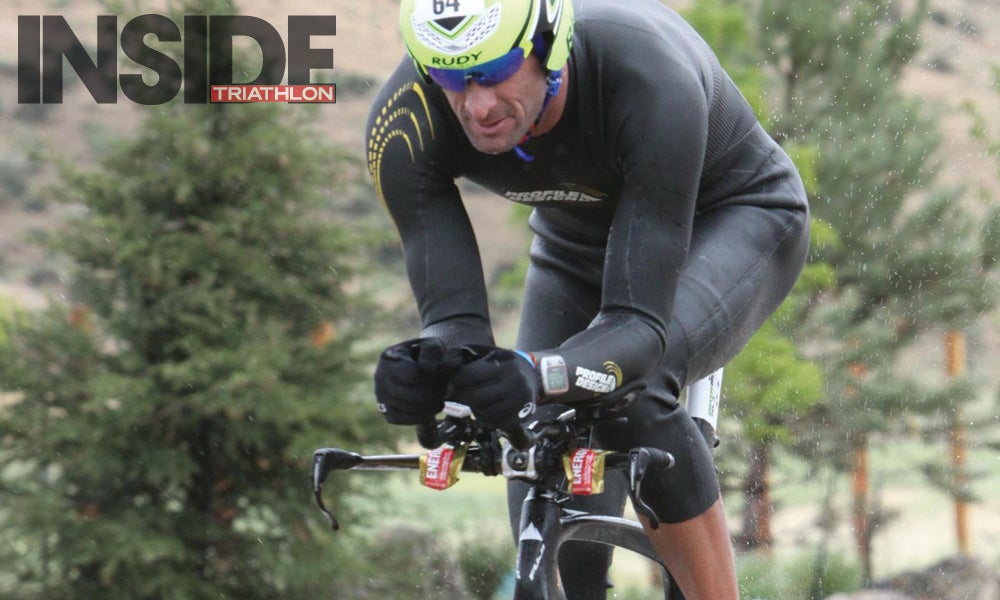Inside Triathlon: Extreme Weather Racing

Matt Reed races in a wetsuit at Ironman 70.3 Boise. Photo: FinisherPix
Last year, Alaska experienced its coldest and snowiest January on record, Florida had its wettest summer ever, while most of the rest of the country suffered severe drought. Welcome to climate change. Not only was 2012 the hottest year in recorded history for the contiguous United States—3.2 degrees F above the average temperature for the 20th century—it was also the second most extreme.
Searing heat and wildfires across Australia in January and a historic blizzard in New England in February suggest more of the same for 2013. Climate experts predict that along with the rise in global temperatures will come more extreme—and potentially race-altering—weather events around the world. These major triathlons were all affected by extreme weather last year.
This article was originally published in the May/June 2013 issue of Inside Triathlon magazine.
March 4, 2012
Lake Taupo, New Zealand
Ironman New Zealand is shortened to a 70.3 and postponed a day due to an “unprecedented and severe weather forecast.”
April 22, 2012
New Orleans
For the second year in a row, Ironman 70.3 New Orleans is turned into a duathlon due to severe weather conditions, which forced cancellation of the swim.
May 5, 2012
St. George, Utah
Choppy waters and powerful wind gusts cause a record-breaking 29 percent DNF rate at Ironman St. George. Starting this year, the race will be shortened to an Ironman 70.3.
June 9, 2012
Boise, Idaho
Freezing temperatures, strong winds, rain and snow in the foothills force Ironman 70.3 Boise officials to shorten the bike to 14 miles. Boulder pro Matt Reed, who tied for the win, wears his wetsuit during the bike to stay warm.
July 1, 2012
Klagenfurt, Austria
The race goes on despite brutally hot temperatures at Ironman Austria.
July 7, 2012
Muncie, Ind.
With temperatures reaching 100 degrees F, Ironman 70.3 Muncie organizers revise course to a 1-mile swim, 30-mile bike and 3-mile run.
Sept. 2, 2012
Des Moines, Iowa
Hy-Vee moves location of its elite race due to low water levels caused by extreme drought in the Midwest.
Oct. 7, 2012
Dallas
The U.S. Open Triathlon, normally a hot-weather event, is unusually chilly. With water temperatures in the 70s, eventual winner Sarah Haskins starts with a swimskin but endures a chilly bike with air temperatures in the 40s.
Oct. 28, 2012
Venice, Fla.
Inaugural Rev3 Florida half-iron-distance race is shortened to a duathlon due to rip tides from Superstorm Sandy.
Note: If you’re planning a full season of destination races, consider race insurance to protect the money you’ve shelled out for race entries months in advance. Look into the “registration protector” offered by Allianz Global Assistance for many events registered through Active.com. For $7, you can be reimbursed for entry fees if your airline or other common carrier is delayed because of bad weather and for a host of other reasons, including illness, injury and military duty.
Liz Hichens and Raymond Britt contributed to this article.
RELATED: Tips For Training In Hot Weather
“Like” us on Facebook to get the first look at our photo shoots, take part in lively debates and connect with your fellow triathletes.